| |
Casting Definitions
|
|
These casting definitions and their complementary illustrations have been developed and approved by the Continuing Education Committee of the FFI Casting Board of Governors. They have been adopted by the Professional Development Committee for inclusion in the Casting Instructor Study Guide, and by the Examiner Development Pathway Committee for inclusion in the CI and MCI Examiner Training Workshops.
The first six definitions specify the elements of fly casting mechanics, that is, the hand and rod movements that produce a fly cast. The remaining definitions were written to provide a common language for casting instructors and examiners. All were written to provide a set of terms that FFI certified casting instructors should use when discussing casting among themselves. When instructors use the core definitions to explain fly casting terms to students, it may be necessary to match the communication content to the skill level of the student by adjusting the wording of the definitions.
Fly casting – the act of casting a fly line with a fly rod
|
|
1) Casting stroke
1. Fly rod motion sufficient to cause loop formation.
2. Rod translation and/or rotation during a fly cast sufficient to cause loop formation.
|
| |
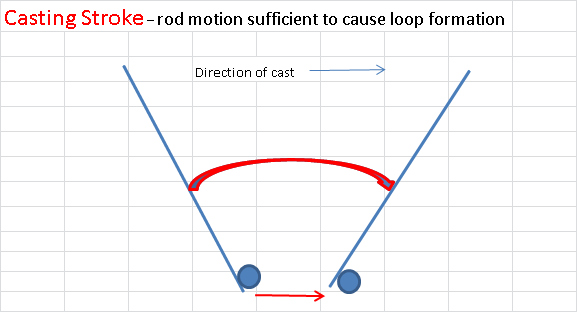
|
| |
2) Casting arc –The angle change of the fly rod during the casting stroke.
|
| |
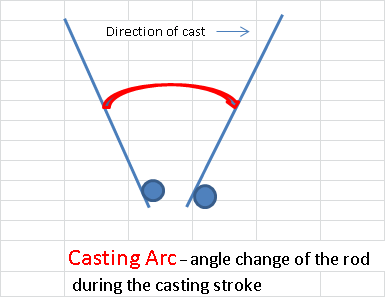
|
| |
3) Casting stroke length (stroke length) – The distance moved by the rod hand during the casting stroke.
|
| |
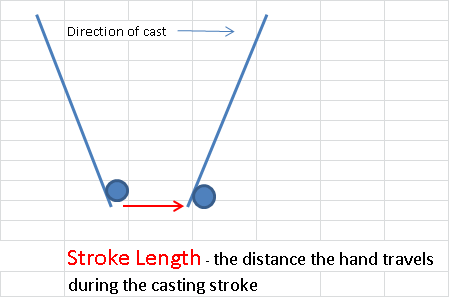
|
| |
| 4) Creep – Rod rotation during the pause in the direction of the next cast. |
| |
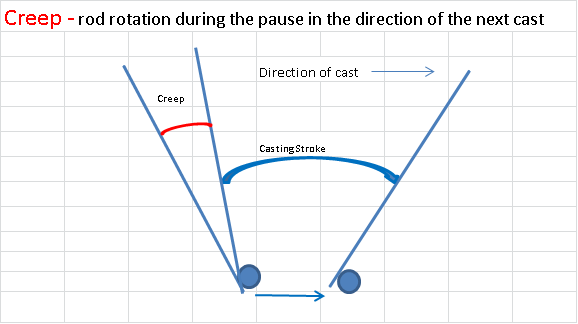 |
| |
5) Drag – Hand translation during the pause in the direction of the next cast.
|
| |
 |
| |
6) Drift – Rod rotation and/or hand translation during the pause in the direction of the current cast.
|
| |
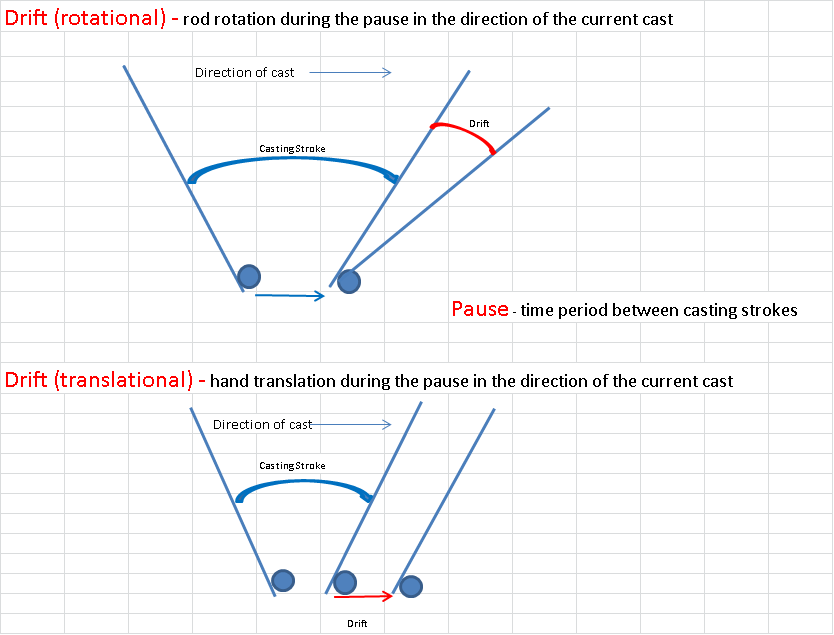 |
| |
|
7) Mend – re-positioning the fly line after loop formation on a delivery cast.
Aerial mend – mending before the line lands on the water
Water mend – mending after the line lands on the water
|
| |
8) Single haul/hauling – pulling on the fly line with the line hand while fly casting
Double haul – hauling on consecutive casts (back cast and forward cast) |
| |
9) Curve cast – Delivery cast in which the fly line and/or leader lands in a curve, caused by rod motion before loop formation
|
| |
10) Pause – The time period between casting strokes.
|
| |
11) Tailing loop - Loop caused by a concave rod tip path in which the top (fly) leg dips toward and crosses the bottom (rod) leg.
|
| |
 |
| |
| 12) Trailing (Underslung) loop – straight or upward curving top leg that falls below the bottom leg due to gravity. |
| |
 |
| |
Approved by the Casting Board of Governors 8/11/2015
Illustrations courtesy of Bruce Richards, MCI, CBOG
|
Click Here to Download PDF Version
|